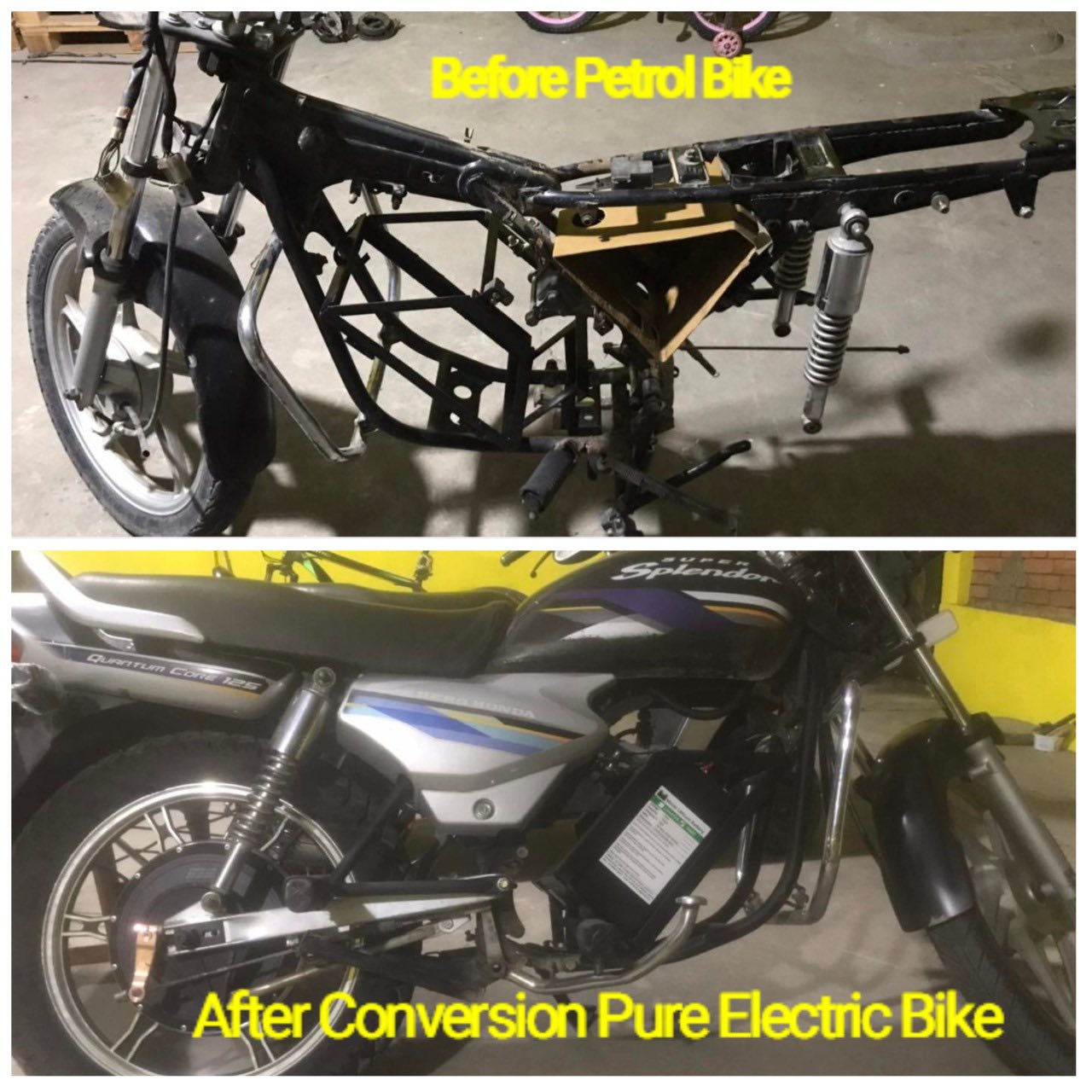Nepal, a nation situated amidst the towering peaks of the Himalayas, is grappling with the harsh realities of climate change, earning the unfortunate distinction of being one of the most affected countries globally. The urgency to combat the environmental repercussions has prompted a worldwide shift toward sustainable practices. Vehicle retrofitting (converting old petrol/diesel vehicle to electric) to electric power emerges as a pivotal strategy. However, despite the global momentum, Nepal finds itself navigating a slow and uncertain path in implementing comprehensive retrofitting policies. This article seeks to delve into the multifaceted aspects contributing to this delay, exploring the potential benefits and missed opportunities in a nation that could stand to gain substantially from embracing this transformative technology.
Global perspectives on retrofitting
Around the world, retrofitting has emerged as a promising solution to transition from conventional petrol and diesel vehicles to electric alternatives. In Australia, not only is retrofitting legal, but it is also actively encouraged, allowing citizens to convert their existing vehicles into electric ones. France, a pioneer in environmental policies, supports retrofitting initiatives financially, aligning economic incentives with ecological goals. New Delhi, grappling with severe air quality issues, is leaning toward retrofitting as a cornerstone of its new electric vehicle policy, offering incentives to transition traditional fuel vehicles into electric mode. Even in the United Kingdom, a government-approved kit enables the conversion of iconic vehicles like the Land Rover Defender into electric powerhouses. These are just a few examples. If you dig deep, you will find numerous examples of countries promoting retrofitting from Africa, Asia, Europe, Americas etc.
Nepal's struggle with retrofitting policy
Despite the global consensus on the viability and benefits of retrofitting, Nepal faces unique challenges in implementing retrofitting-friendly policy. The country made a crucial announcement in the Nepal Gazette nearly two years ago, declaring its intent to allow retrofitting. However, the absence of a concrete framework for implementation has resulted in a prolonged period of uncertainty. There are many startups in Nepal that have already successfully completed retrofitting their prototype but due to lack of policy their investment and work is at risk.
Unique advantages for Nepal
Nepal stands at the cusp of a unique opportunity to harness the potential of retrofitting, owing to distinct advantages that set it apart. The nation boasts an abundance of renewable electric energy, a stark contrast to its complete reliance on imported oil and gas. Shifting to electric vehicles not only aligns with global efforts to combat climate change but also offers a chance to bolster the local electricity market and redirect significant funds currently flowing out of the country for oil and gas imports.
Furthermore, Nepal faces the challenge of a nascent domestic automotive industry. While there have been commendable efforts by startups to produce two-wheelers and three-wheelers within the country, the scale remains inadequate. Retrofitting provides a pragmatic solution to revitalize the automotive sector, enabling the transformation of existing vehicles without solely relying on imports.
Creating a new market
Unlike countries with established electric vehicle production capabilities like India, Nepal has the potential to birth an entirely new market through retrofitting. Shifting focus from traditional vehicles to retrofitted electric ones not only reduces environmental impact but also stimulates economic growth. As the expertise and experience in retrofitting grow, Nepal could envisage establishing its own electric vehicle production industry, contributing to economic self-reliance.
Cost-effectiveness and transition smoothing
One of the standout advantages of retrofitting is its cost-effectiveness, providing a viable path for individuals to transition from petrol and diesel vehicles to electric ones. In a landscape where the prices of new electric vehicles often act as deterrents, retrofitting emerges as an affordable alternative. For instance, the cost of a new electric bus in Nepal might be exorbitant compared to a diesel bus, but retrofitting offers a more budget-friendly solution.
Moreover, retrofitting involves a comprehensive overhaul of the vehicle's powertrain, essentially rendering it as good as new. This not only ensures the transition to electric is economically sensible but also extends the lifespan of existing vehicles, reducing the overall environmental impact associated with manufacturing and disposing of new vehicles.
Influential factors and sacrifices
The delay in implementing a retrofitting-friendly policy in Nepal can be attributed to apprehensions from various stakeholders. Importers may fear a loss of business, the government may be concerned about potential drops in tax revenues, and bureaucrats may worry about commission reductions. However, these concerns must be weighed against the broader benefits of embracing electric retrofitting, which far outweigh the short-term anxieties.
Sacrifices are inevitable for any transformative change, and the benefits of ushering in an electric vehicle revolution in Nepal extend beyond individual interests. The nation's vulnerability to climate change, coupled with its heavy dependence on imported fossil fuels, necessitates a collective effort to prioritize sustainable solutions over immediate gains.
Conclusion
Nepal, with its unique set of challenges and advantages, finds itself at a critical juncture in the global pursuit of sustainable development. The delay in implementing a retrofitting policy is not merely a bureaucratic hurdle; it represents a missed opportunity for a nation that could serve as a beacon of sustainable living on the planet.
Retrofitting vehicles to electric power aligns seamlessly with Nepal's abundance of renewable energy, absence of domestic oil and gas production, and the need for economic revitalization in the automotive sector. It is not just a matter of mitigating climate change but a strategic move toward economic self-sufficiency and environmental sustainability.
As the global community rallies for a greener and more sustainable future, Nepal must not only talk about climate change but also act decisively. The time is ripe for the nation to rise, overcome hurdles, and lead the way in making Nepal a model for sustainable living on the planet. The benefits of retrofitting extend beyond individual interests; they encompass the well-being of the nation and the planet as a whole.
(The author holds an engineering degree from USA , and is an energy entrepreneur currently working in clean energy and mobility sector in Nepal)

